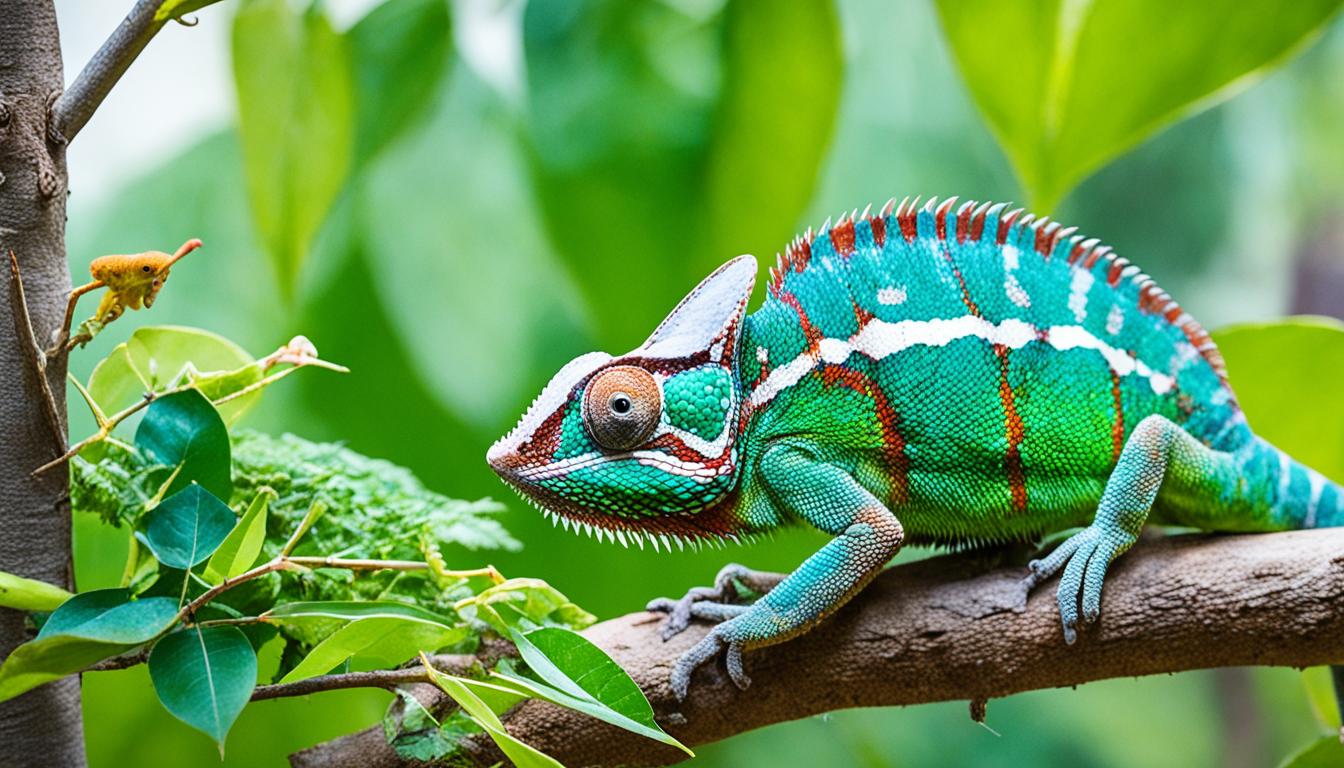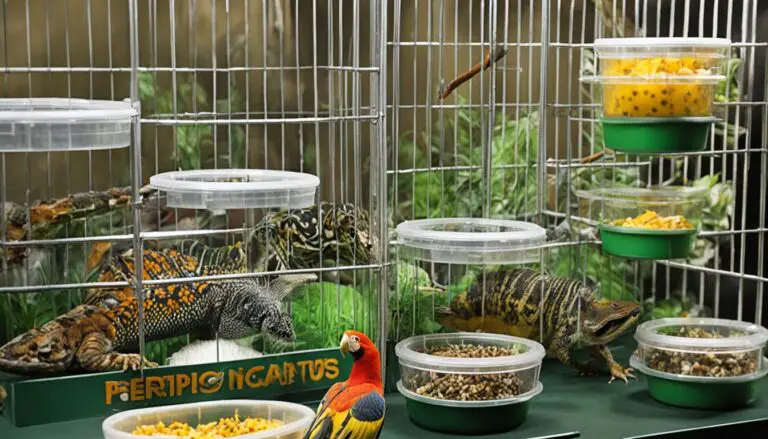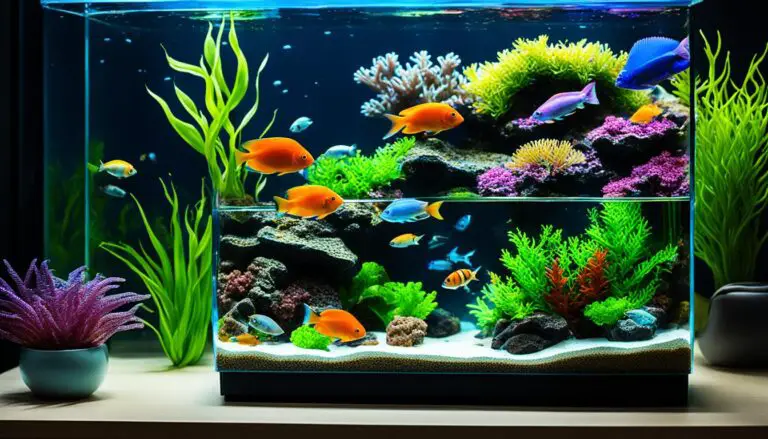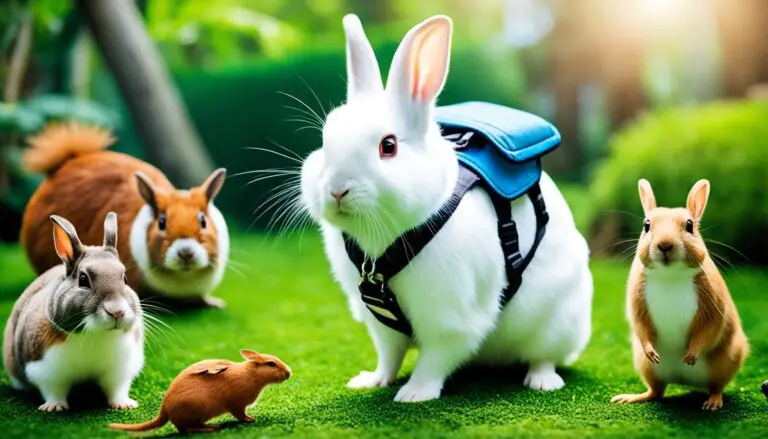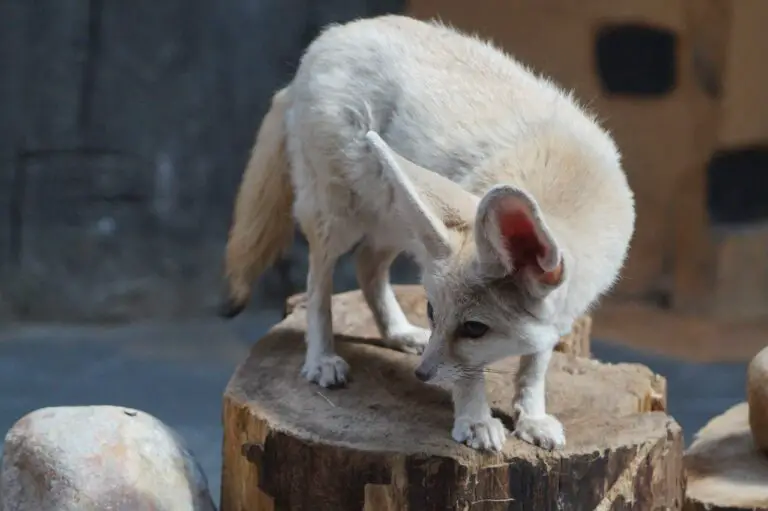Exotic Pet Potty Training Tips & Tricks
Over 10% of American homes now have exotic pets. Today, potty training them is key to their care. While it’s hard, the right methods can be rewarding for both pet and owner.
Keeping your place clean is just one goal. Potty training helps your pet and you live happily together. It includes understanding your pet and using the best training methods. Whether it’s a ferret or a parrot, knowing how to train them is crucial.
Key Takeaways
- Exotic pet potty training requires patience and dedication.
- Understanding your exotic pet’s behavior is crucial for effective training.
- Consistency is key to successful potty training for all exotic pets.
- Different exotic pets may require specialized training methods.
- Positive reinforcement can greatly enhance the potty training process.
Understanding Your Exotic Pet’s Bathroom Habits
Getting to know your exotic pet’s funny bathroom habits is key for potty training. Different exotic pets show their needs in unique ways. Figuring these out makes the whole training much smoother.
Identifying Behavior Patterns
For exotic pet behavior training, spotting special behaviors is vital. Each pet might do something specific to say “I need to go.” Watch for signs like a time they’re very active or right after eating. These are likely when they’ll need to use the bathroom.
Common Bathroom Signals
Learning bathroom cues is essential for specialized potty training for exotic pets. Watch for actions like circling, sniffing, or scratching. These usually mean they need to go soon. Knowing these signs can help direct your pet to the right bathroom spot.
Initial Observations and Adjustments
Key to starting potty training is watching closely at first. Notice how your pet acts before they go. Then, make their bathroom spot easier to reach. By staying alert and making changes, you prepare for a smooth exotic pet behavior training.
| Behavior | Signal | Adjustment |
|---|---|---|
| Circling | Indicating need to go | Lead to bathroom area |
| Sniffing the ground | Searching for a spot | Guide gently |
| Scratching | Prepping the area | Direct to litter/ designated spot |
Exotic Pet Potty Training Techniques
Teaching exotic pets where to go potty is different from regular pets. We will look at unique ways to train them. This includes making a perfect space and praising them when they do well.
Creating a Suitable Environment
Starting with the right space is key to pee and poop training. Your pet needs a special spot that feels like home. It should be safe and cozy. For example, ferrets might like a litter box with their preferred materials. Reptiles usually need a certain place for their bathroom use.

Using Repetition and Consistency
Teaching your exotic pet takes doing the same things over and over. Sugar gliders or tarantulas need a set schedule. Guide them to their bathroom spot regularly. Use signals to show them it’s time to go.
- Direct your pet to the potty area after meals
- Use specific verbal or visual cues
- Maintain a consistent schedule
Reinforcing Positive Behavior
Rewards are a big part of training your exotic pet. Give them a treat, praise, or toy right after they use the right spot. They’ll learn what to do through your happy reactions. This positive training is very effective.
| Pet Type | Reward Examples |
|---|---|
| Ferrets | Special treats, playtime |
| Reptiles | Favorite insects, comfortable basking area |
| Sugar Gliders | Fruits, bonding time |
Litter Box Training for Various Exotic Pets
Training an exotic pet to use a litter box improves their life and makes care easier. The training method depends on the pet’s species. However, the key steps are always the same. Let’s see how to do it with different kinds of exotic pets.
Litter Box Selection and Placement
Picking the right litter box is important for training. Big pets like ferrets or raccoons need large, solid boxes. But, smaller animals such as hedgehogs and reptiles do well with smaller boxes. It’s crucial to place the box in a calm, easy-to-reach spot. This helps the pets feel at ease and encourages them to use it.
| Pet Type | Litter Box Size | Preferred Placement |
|---|---|---|
| Ferrets | Medium to Large | Corner of the enclosure |
| Hedgehogs | Small | Near sleeping area |
| Raccoons | Large | Outside the main living space |
| Bearded Dragons | Small | Outside water area |
Raccoon Potty Training
Raccoons learn to use the litter box in a unique way. They are smart and eager to learn. First, watch where they go to the bathroom and put the box there. Raccoons respond well to treats and encouragement which helps with training.
Bearded Dragon Bathing Method
Bearded dragons don’t naturally use litter boxes, so we don’t train them that way. Instead, we use the bathing method. Bathing your bearded dragon in warm water serves many purposes. It helps keep them clean and hydrated. Plus, it can also encourage potty time. This approach combines two important activities into one, making care simpler.
Effective Exotic Pet Potty Training Practices
Potty training an exotic pet can be tough, but it’s worth it. Knowing the right way to train them makes it easier. It’s all about being consistent and patient.
Consistency and Patience
Being consistent and patient is vital in potty training exotic pets. This means they know what to do, and you let them learn in their own time. Setting a routine is crucial. Also, remember every pet learns differently.
Handling Accidents and Clean-ups
Accidents will happen when potty training your exotic pet. Stay calm and use pet-safe cleaners to clean up. This makes sure there’s no smell to encourage more accidents. A clean living area helps your pet know where to go.
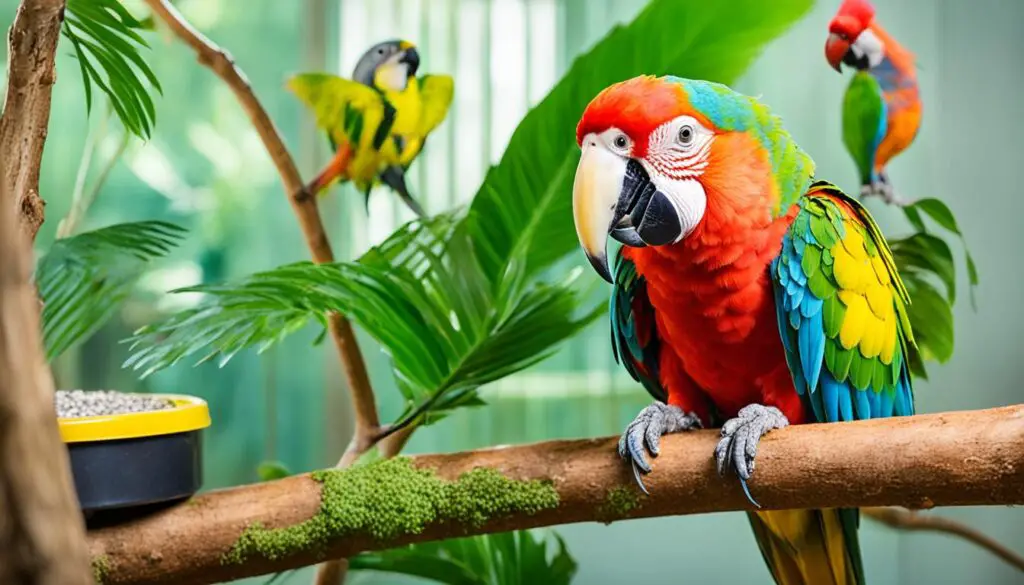
| Step | Action | Why It’s Important |
|---|---|---|
| 1 | Detect the accident early | Prevents further mess and stress |
| 2 | Use pet-safe cleaners | Avoids harmful chemicals and removes odor |
| 3 | Reinforce positive behavior immediately | Helps pet understand desirable actions |
| 4 | Keep a clean environment | Encourages proper habits |
Conclusion
When it comes to potty training exotic pets, patience and persistence are essential. By following the best tips, like setting a regular schedule, you will make real progress. This will not only make life easier but also bring you closer to your pet.
Stay motivated even when things don’t go as planned. Focus on getting better bit by bit, and don’t forget to celebrate every win, big or small. Understanding what your pet needs and keeping training positive makes a big difference. The journey of training is just as fulfilling as reaching your goal.
Potty training exotic pets requires effort, but it’s worth it. With the right mindset, it can be quite rewarding. Take up the challenge and enjoy the unique journey of training a nontraditional pet. Every effort you put in brings you and your exotic friend closer.
Share Your Success Stories
Have you cracked the code on how to house train exotic pets? If you have, we want to know about it! Let us in on how you taught your pets to potty indoors or learned to read their bathroom cues. Your story could help the whole exotic pet gang.
Potty training unusual pets can throw big challenges your way. But with your sharing, you can offer a map for others to navigate these waters. Talk about spotting your pet’s signs and which methods got the best results. Sharing these details adds to a knowledge treasure chest for all.
Jump in and swap notes with other friends of exotic pets. Sharing your wisdom can inspire and support others on this journey. Remember, the heart of all good house training for exotic pets is steady patience, doing things the same way, and a dose of friendly advice.
FAQ
Why is it important to understand my exotic pet’s natural bathroom habits?
How can I identify behavior patterns that indicate my exotic pet needs to use the bathroom?
What are common bathroom signals among exotic pets?
What initial observations should I make to start the potty training process effectively?
What are the key elements of creating a suitable potty training environment for my exotic pet?
How important are repetition and consistency in potty training exotic pets?
How can I reinforce positive behavior during the potty training process?
How do I choose and place a litter box for my exotic pet?
What are the steps for potty training a raccoon using a litter box?
How can bathing bearded dragons help with potty training?
Why are consistency and patience important in exotic pet potty training?
How should I handle accidents and clean-ups during potty training?
Source Links
- https://exoticpetwonderland.org/2022/11/02/how-to-litter-box-train-a-raccoon/
- https://www.bestbullysticks.com/blogs/bbs-blog/9-tips-for-potty-training-a-stubborn-dog
- https://www.carprincess.me/blog/potty-train-bearded-dragon
Peter Stones is the founder of Exotic Pets Place, the leading online resource for exotic pet care information.
With over 10 years of hands-on exotic pet ownership experience, he is deeply passionate about sharing his expertise to help others properly care for their unusual pets.
When he's not writing extensively researched articles or connecting with fellow exotic pet enthusiasts worldwide, you can find Peter at home tending to his own beloved menagerie of exotic animals.

